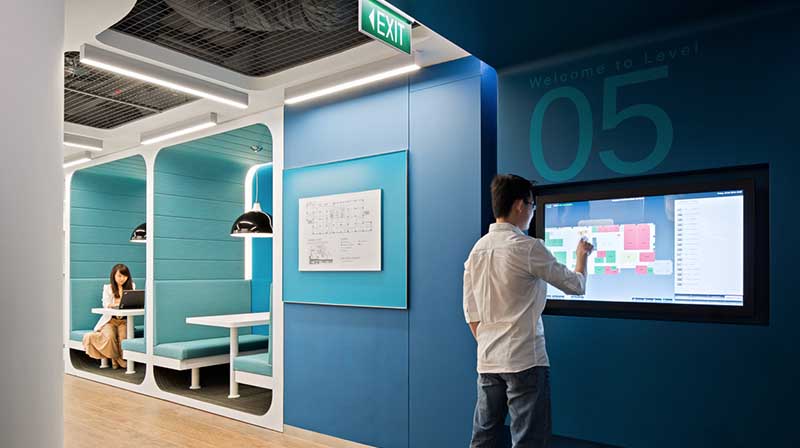
We can consider smart space as a physical or digital environment in which humans and technology integrated systems interact in an increasingly open, connected, coordinated, and smart ecosystem. It offers an environment that is inbuilt with audio sensing and visual systems that can respond to people without requiring them to wear any specific kind of equipment.
Smart spaces are developed on various technologies such as vision, facial expression, gesture recognition, dynamic solution, performance animation, and audition. An ideal example of smart space is smart homes or connected home that is beneficial in enhancing productivity, safety, and entertainment. There are other areas also where there is a vast use of smart space such as hospitals, airports, grocery stores, and apartment buildings.
Smart homes are built on the idea of incorporating intelligent technologies into residential spaces that aim to enhance the quality of life. The emergence of this idea is a favorable solution for significant concerns towards developing segments namely, energy consumption and environmental impacts. Moreover, smart homes provide consistent monitoring and controlling for the patients.
Smart homes are capable of observing the behaviors of residents and activities with the help of sensors and actuators used throughout the unit. Smart homes assume a major role in changing the future cities based on their explored potentials and benefits. The significant potential of smart homes in automation and digitalization of living environments and the incorporated technological units is extensively accepted.
With a changing workforce, new trends of work, and distinct work types, a new kind of technology-driven office building is taking shape that is responding to the challenges of the next-decades workplace. Smart offices have evolved gradually, from the main aim of handling costs through managing environmental influence, to handle the complete user experience in the workplace.
It becomes essential to directly manage the needs and aspirations of the working class because the trends of work and attitudes of the working people are changing. Due to this aspect, it becomes necessary to invest heavily in and possess office buildings that are attractive in the times to come and benefit from its good reputation.
Advanced technologies like the Internet of Things (IoT), Big Data, and intelligent Building Management Systems (iBMS) are changing the manner in which new buildings are built and designed. With the help of advanced use of data and analytics, smart buildings facilitate interactions, sharing of knowledge, and enhance the performance of a business.
Moreover, smart buildings enable superior, more effective utilization of space and environments that help companies to get the most from their employee. One more benefit of smart buildings is that they bring a healthy environment and offer technology that can enable and evaluate wellbeing, aid in decreasing the costs of sickness and absenteeism.
A smart space should offer the facilities for a user, device, and application to validate with various security means, e.g. ID, password, public key exchange, biometrics, etc. Authentication is needed before various types of interactions and actions can be carried out.
Smart space can be considered as a native and easy way to gain access to important data with respect to the meetings and events business management. Smart space refers to an original environment that is integrated with audio & visual sensing systems that can observe & respond to people.
Owing to the potential applications of smart homes in different sectors, the smart space industry will flourish more in the upcoming years. Different segments of smart space have been discussed in this article viz. smart homes, smart offices, and smart buildings.
The Global Network Attached Storage Market is expected to rise at a growth rate of 12.3% CAGR during the forecast period.